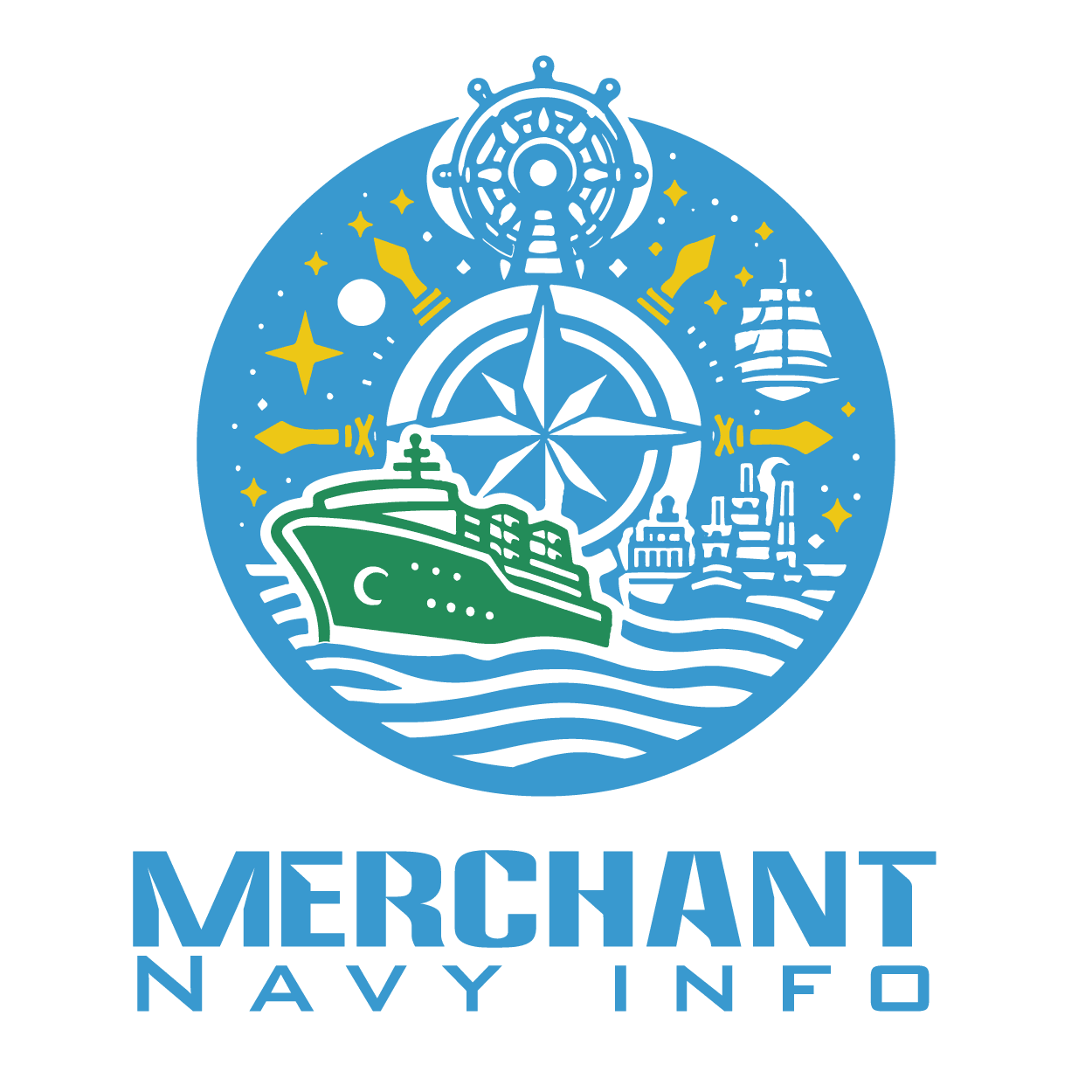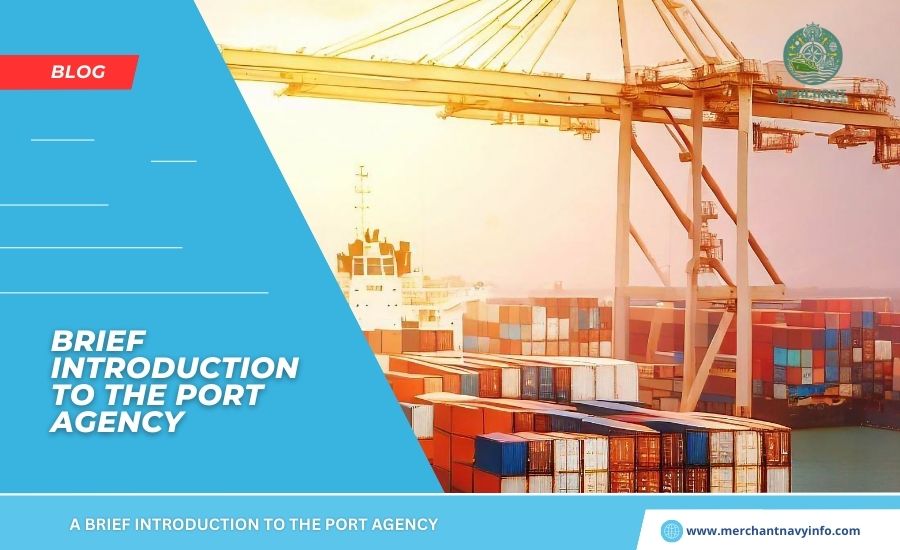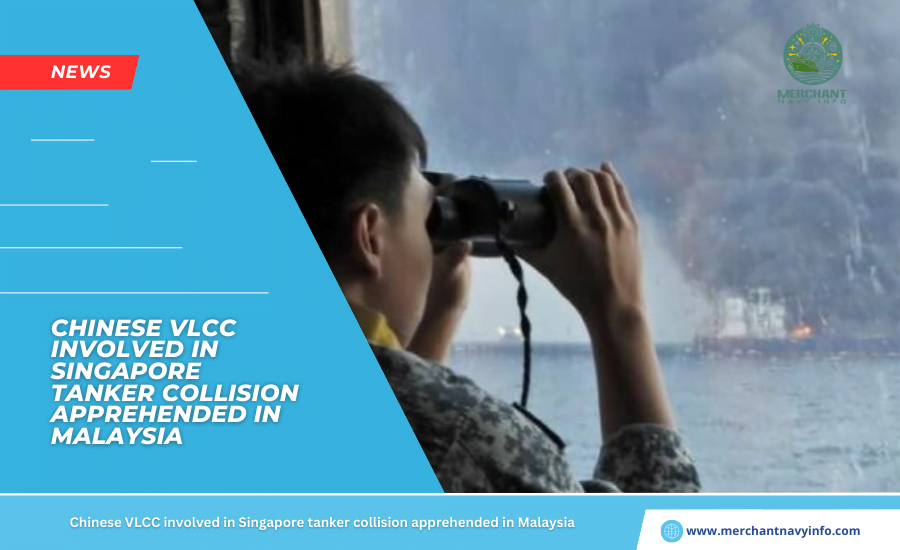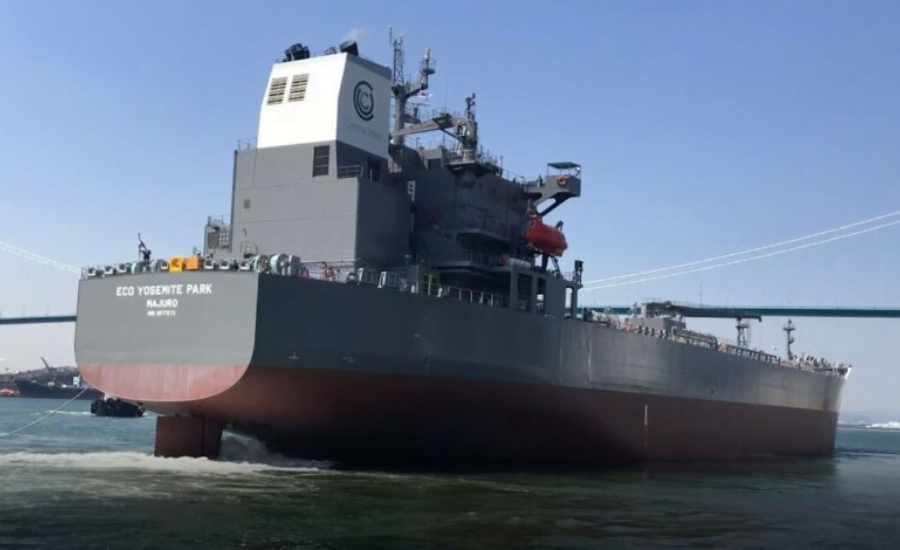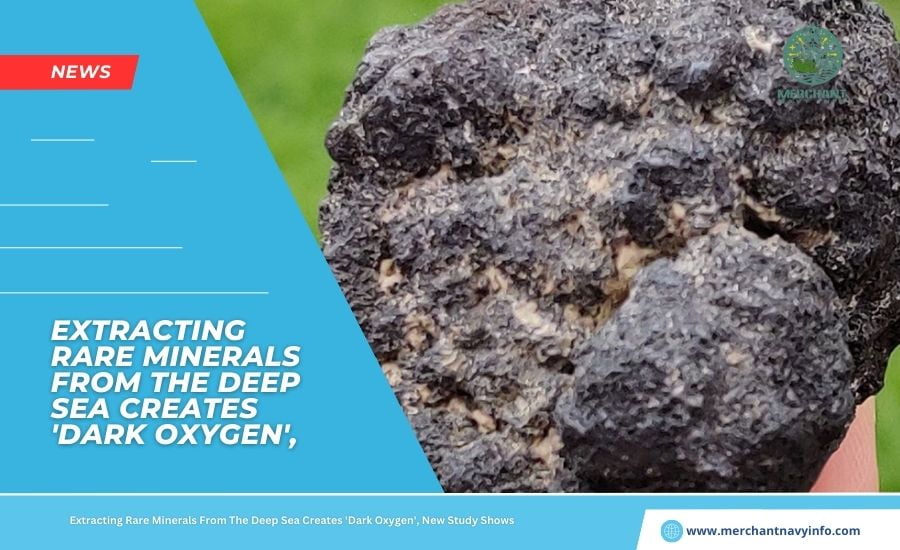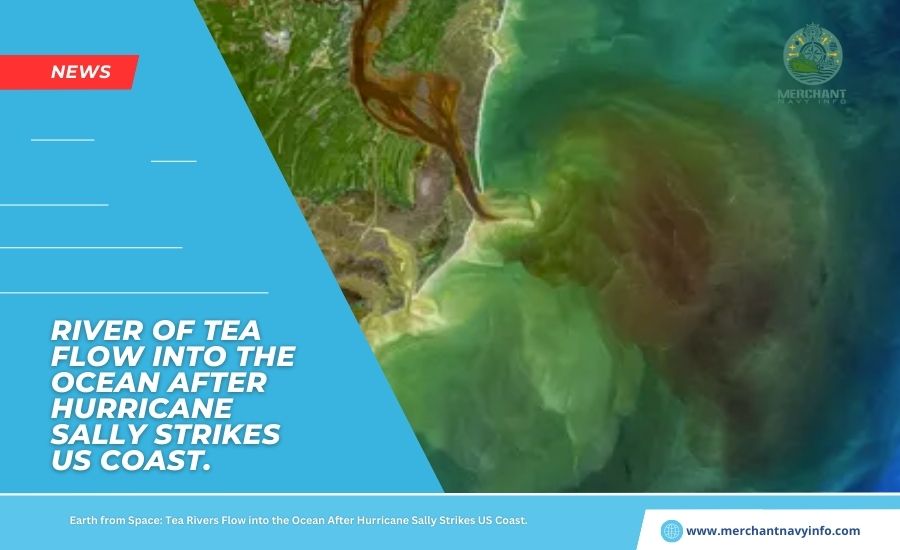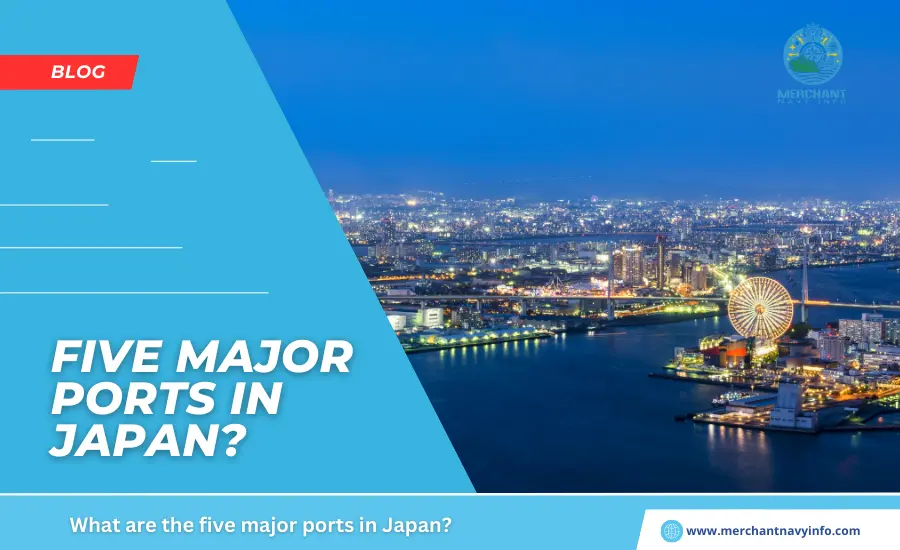
Japan is currently one of the most powerful countries in the world. Despite its high population density, it makes optimal use of its human resources. It is a leader in the automotive and electronics fields and has created numerous technological innovations. Japan has more than 300 port city of japan, both large and small, contributing to economic and infrastructure development.
Take A Look at Some of Japan’s Most Important Ports
Tokyo Port

Tokyo port city of japan is located in the city of Tokyo, which is the industrial, cultural, and also economic center of Japan. Formerly known as Edo Port, it began operations in 1941 with three terminals and was further expanded due to the needs of World War II. Since the 1960s, more container terminals have been built.
Today, the Port of Tokyo is still one of the largest ports in Japan and the Pacific Ocean, with a throughput of approximately 90 million tons per year. At various terminals and facilities, he employs more than 40,000 people. The Tokyo Port Authority owns this port, and the container import volume in 2019 was 2.46 million TEU, which is more than any other port in Japan.
The Port of Tokyo has an area of 1,000 hectares and includes 204 wharves and 15 berths for container handling, as well as numerous storage yards and cold storage facilities. We distribute food, steel products, paper, automobiles, etc. throughout Japan, mainly in Hokkaido. We also have international trade relationships with China, South Korea, Southeast Asian countries, America, and Europe.
There Are Too Many Terminals
Ohi Terminal covers an area of 235 hectares, has seven piers and also can handle vessels weighing approximately 51,000 DWT. It is equipped with 20 cranes and can handle 58,000 TEU per year. The terminal is home to approximately 45 shipping companies and has a storage area of 34 hectares.
Qinghai Terminal has five berths and can handle vessels weighing 36,000 DWT. It transports 25,000 TEU and has 1,336 refrigeration points. The Shinagawa terminal has an area of 24 hectares, its three berths handle international cargo, is equipped with five cranes and can handle 6,000 TEU. Oi Food Terminal and Oi Marine Terminal each handle bulk items such as wheat, fruits, vegetables, and marine products. The wood terminal imports wood from countries such as the United States and Malaysia. Tsukishima Terminal handles marine products, and Takeshiba Terminal handles agricultural products.
Shinagawa Terminal handles vehicles and newspapers, and Tatsumi handles steel products. Tokyo Port also has a passenger terminal. The most famous is Harumi Cruise Terminal.
Port of Kobe

The fourth largest port city of japan, the Port of Kobe, is located in Honshu and has an annual cargo throughput of 80 million tons. There are 34 berths for container loading and unloading. It is now part of the larger Hanshin Port. Approximately 8,500 ships, 86 million tons of general cargo, 2.5 million TEUs, and 3,000 passengers are handled annually.
In 2019, the container cargo handling volume was 2,864,145 TEUs, with export cargo of 1,178,488 TEUs and import cargo of 1,006,807 TEUs. This port is the port of Kobe city. It has long had trade relations with Korea and China and has a heavily protected harbour. Its favourable geographic location connects it to more than 450 port cities around the world. In addition to being an important trading port, it is also a popular tourist destination. The port has two terminals for cruise ships and ferries.
Container Terminals
Kobe port city of japan has six container terminals covering an area of over 786,880 m². In addition, there are 12 terminals that handle general cargo. There are many verses, the most important ones being RC2 Berth, which is owned and managed by Mitsui-Soko Co., Ltd. RC4 Berth, which is operated by Kawasaki Kisen Kaisha, Ltd. The general cargo terminal is managed by KPTC and has a storage area of 5,440 square meters.
There are many other terminals and berths available for rent by various companies. Kobe Port has promoted the development of many Japanese industries near the port, boosting the industrial sector and the Japanese economy. It is also a fishing port, and ships loaded with huge trawlers are often seen, from which seafood is exported overseas.
What Are The 10 Major Ports Of India?
Nagoya Port

Located in Ise Bay, Nagoya port city of japan is largest commercial port, handling more than 10% of Japan’s international trade. Toyota, the Japanese car manufacturer, exports most of its cars from this port to all parts of the world. Approximately 1.4 million vehicles are exported to approximately 160 countries around the world each year. In addition, more than 114,000 bicycles have been exported.
In addition to automobiles, we also handle dry bulk and liquid products, container products, liquefied gas, metals and metal products, processed foods, and forestry products such as tree trunks. The port has a naturally protected harbour and an artificial breakwater. It has trade relations with China, the United Arab Emirates, Saudi Arabia, Australia, etc.
Owned and managed by the Nagoya Port Administration Bureau. It has 290 berths and is over 33 kilometres long. It has numerous warehouses covering an area of 278 hectares, 53 hectares of covered storage area, 74 hectares of coal storage, etc.
Container Terminals
4 container terminals and 12 berths covering an area of 146 hectares. Two of these terminals, the South Terminal and the North Terminal, are located at Tobishima Pier. The pier is equipped with five gantry cranes and other modern port equipment. Trade is primarily with North America, Western Europe, and Australia.
There are also bulk terminals such as Shionogi Shipyard, which has six docks for handling coal and steel cargoes. It can accommodate ships weighing 15,000DWT. The port has 30 public berths for handling conventional cargo. Another pier called Kinjo has five spacious berths to handle cars. Inari Wharf trades cotton and grain, and Yokosuka Wharf trades building materials. “Kaishiomi” is in charge of oil tankers and has 20 dedicated berths. Garden Pier has a passenger terminal for cruises, boats and passenger ships.
Osaka Port

Osaka Port is located in the Kinki region of Osaka and is one of Japan’s leading ports near Osaka Bay. It can handle more than 80 million tons of cargo annually and has trade relationships with approximately 140 countries. The total cargo volume handled in 2019 was 85,507,578 tons, including 35,669,619 tons of container cargo and 49,835,000 tons of ferry cargo.
It has an area of 4.8,000 hectares and includes 181 berths, including 70 berths for international transport, 110 berths for domestic trade and 13 berths for containerized cargo. We handle a variety of products, including iron, iron ore, vehicles, auto parts, steel, pulp, agricultural products, paper, and construction materials centred on cement.
Container Terminals
Yumeshima Container Terminal has a total length of 1350 meters. There are three berths for trade from North America, Australia, Taiwan, Southeast Asia, etc., and six berths in the Nanko area or part of Sakishima Port to handle international container cargo.
In addition to handling fruits and vegetables, Pier Maishima has a multi-purpose berth that handles cars and RoRo ships. There are seven functional sleeping areas.
Nanko also has a ferry terminal, which handled 900,000 tons and 60,000 people in 2018. The passenger terminal, known as Tempozan Cruise Terminal, is over 370 meters long and hosts cruise ships and motorboats carrying tourists.
Yokohama Port

Yokohama Port is owned by Yokohama Port Co., Ltd. In 2019, there were approximately 35,000 vessels and a transport volume of approximately 350 million tons, including 2.9 million TEU of containerized cargo. It is one of the largest ports in Japan with 10 quays.
Honmoku Dock is a major port facility with 14 berths for container handling and 10 berths for general cargo. A newly developed facility at Minamihonmoku Pier that began operation in 2015. There are four berths with a span of over 400 meters, and large container ships can also be berthed there. The facility has six cranes and 22 container lines. Additional berths are being built to accommodate the increased traffic.
Osanbashi Pier is responsible for passenger ships and cruises, Detamachi Pier is responsible for importing fruits and vegetables, and Daikoku Pier is responsible for logistics services, with seven berths and a huge warehouse. Kanazawa Pier handles building materials such as lumber, scrap metal, wood products, sand, gravel, and stone.
Conclusion
Japan’s ports are one of the driving forces behind the Japanese economy. Revenues from international trade help build the transport infrastructure and health services for which Japan is known. Ports contribute significantly to GDP and drive further industrial and technological advances. In addition to development, these ports have also led to the creation of many jobs and involved local communities in their functioning, thereby providing additional income to many rural households.
What Are The 10 Major Ports in Mexico?
What Is The 10 Major Port In Dubai?
What are the 7 Major Ports in the UK?
What Are The 10 Major Ports In Yemen?
What Are The 5 Major Ports in Algeria?
10 Major Ports are there in Canada?
What are the 6 Major Ports in Israel?
What Are The 8 Major U.S. Ports on the East Coast?
What Are The 8 Major Ports In Pakistan?
What are the 5 Major Ports in Oman
What are the 10 Major Ports in Brazil?
What are the 7 Major Ports in Qatar?
What Is The 5 Major Port in Vietnam?
What Are The 10 Major Ports Of India?
